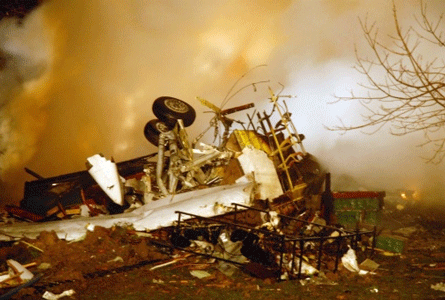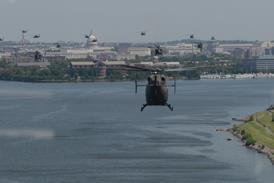Graham Warwick/WASHINGTON DC
This is a very good time for business jet manufacturers. By almost any measure - orders, deliveries or backlog, in aircraft numbers or dollar value - the industry is setting records. Manufacturers also expect to continue doing well - as long as the US economy remains strong.
While no manufacturer or market analyst is foolish enough to forecast that the US economy will continue its upward trend indefinitely, they do believe that the next downturn, when it comes, will be milder than the last - at least in its effect on business aviation.
History suggests that a recession would empty the orderbooks, but analysts believe the industry fundamentals have changed since the last boom turned to bust in the early 1980s. That boom was fuelled by the novelty of business aviation, believes Michael Paslawskyi, an economic analyst with equipment financing company The CIT Group.
When recession hit and corporate profits fell, shareholders saw business jets as unnecessary perks. Now they see corporate aircraft as essential time-saving tools. "The attitude has changed at shareholder level," Paslawskyi believes. "They don't want to see an expensive executive sitting at an airport wasting time."
That perception of the corporate aircraft as a business tool will be vital to success in the new market for ultra-long-range business jets in the 12,000km (6,500nm) class.
SUSTAINING DEMAND
There are already more than 200 of these aircraft on order from the four manufacturers. But will the market be large enough, and last long enough, to sustain the planned production of over 80 aircraft a year? And does the apparent corporate acceptance of machines costing $40 million or more mean that a supersonic business jet costing perhaps twice that can be successful?
Just how large the large aircraft market will be "-is too early to say", believes Paslawskyi. Only one of the four ultra-long-range aircraft has entered service and all four manufacturers are still heavily promoting their products to stimulate the market, he says.
The orderbooks look impressive. Gulfstream, first on to the market, has booked 100 orders for its GV since its launch in 1992. Bombardier launched its Global Express in 1993 and has 80 orders. Boeing has announced 29 orders for its 737-based Business Jet, unveiled in 1996, while Airbus has 12 orders so far for its A319-based Corporate Jet, launched only last year.
The GV entered service last year and Gulfstream believes the results are already coming in. "The GV is definitely being used for long-range flights," says chief operating officer Bill Boisture. "More people are getting used to 13-14h flights."
Despite this apparent early acceptance of the realities of ultra-long-range flight, Gulfstream is not revising its estimate of the market's size. "We said we thought the market was for 400-600 aircraft over 10 years, and we're not shy in saying that we think 400 is right," Boisture says. "Our plan was to take 50% of the market. We're comfortable with 100 orders five years in."
Bombardier, meanwhile, is sticking with its estimate of a potential market for 550-800 aircraft to 2010, excluding governments, says Business Aircraft division president Michael Graff. The Global Express programme is based "conservatively" on selling 250 units over that period, he says. With the aircraft just certificated and due to enter service by the beginning of next year, the company says orders are tracking its projections.
Confusing estimates of the demand for ultra-long-range business jets is the entry of first Boeing, then Airbus, into the market. Both the Airbus A319CJ Corporate Jet and Boeing Business Jet lack the extreme range capability of the Global Express and GV, but offer much larger cabins.
The debate hinges on whether the airliner manufacturers are taking market share from Bombardier and Gulfstream, or tapping into demand for a different type of aircraft. Graff, for one, argues that the A319CJ and BBJ will sell mainly to the operators of some 200 airliners now in corporate and government service. "These aircraft appeal to people who need to travel long distances in large groups," he says.
Boisture agrees that Airbus and Boeing "-are at the fringe of the ultra-long-range market." He cautions, however, that "-the market does not expand geometrically just because they are there." To varying degrees, the four companies are chasing the same customers.
Boeing, undaunted, forecasts a market for 600 aircraft over 10 years and is aiming for a 40% share, or 24 aircraft a year (the same number that both Bombardier and Gulfstream plan to build annually). Airbus sees a total market for 24 aircraft a year, and wants half, but only considers the BBJ as competition.
While heads of state are considered likely buyers of the bigger aircraft, only 25% of BBJs and one-third of A319CJs sold so far have been to governments - a trend which may yet concern Bombardier and Gulfstream.
A strong economy appears to have boosted sales to individuals made wealthy by stock market growth. Another factor that will boost sales of large aircraft, to individuals and corporations Paslawskyi predicts, is fractional ownership. "Why pay for the whole aircraft when you only need 100-200h a year," he asks.
That question may come to vex Dassault, as it studies the market for a Mach 1.8 supersonic business jet (SSBJ). Having eschewed development of an ultra-long-range Falcon, the company is now looking to compete by offering an aircraft able to complete the same trips faster, despite a stop en route to refuel.
The Falcon SSBJ, if developed, will be more expensive and have a smaller cabin - seemingly going against today's trend. While this can be balanced against the executive time saved, development of an SSBJ is likely to require a continued vibrant economy, shareholder acceptance - and a strong appeal to the fractional ownership market.
Dassault SSBJ Specifications
Length overall 31.7m
Wing span overall 16.9m
Powerplant3 x GE F414 or Snecma M88
Power (each)12,000lb (53kN)
(unreheated)
Operating weight empty 17,000kg
Maximum fuel weight 20,800kg
Maximum take-off weight 38,900kg
Cruise speed Mach 1.8
Range 7,400km
Source: Flight International























